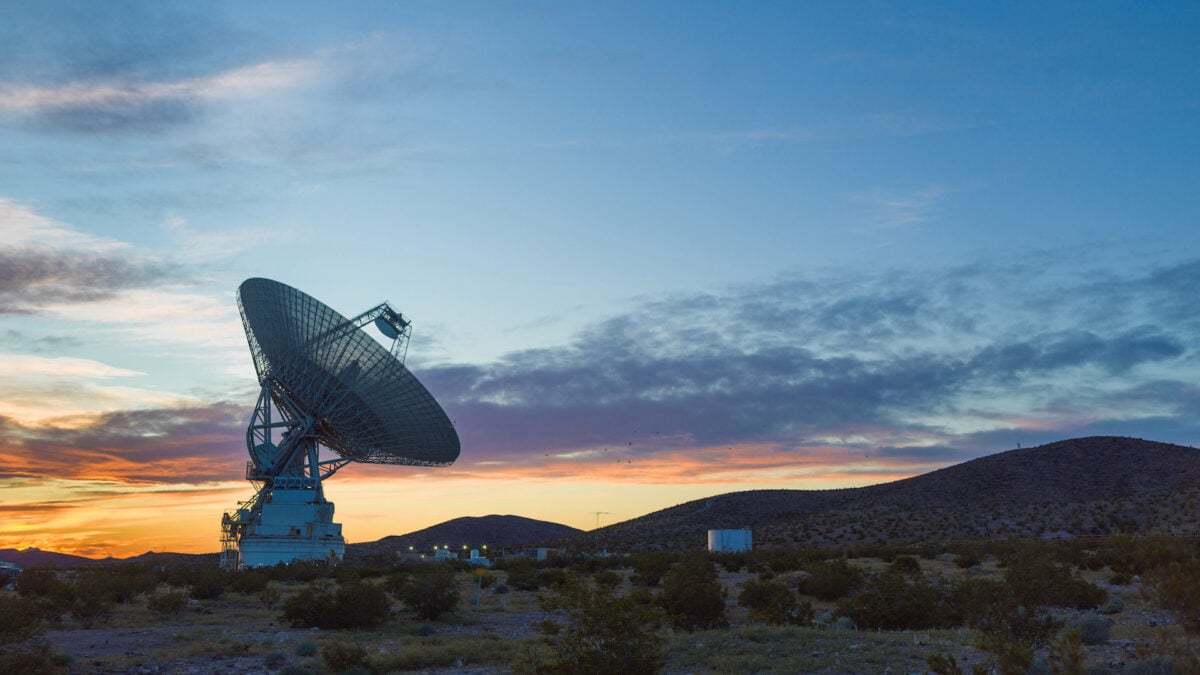A massive antenna used to communicate with Martian spacecraft and track near-Earth asteroids has been offline for nearly two months. NASA has shared little information regarding damage sustained by the 230-foot-wide radio antenna, while ways to fix it remain unclear even as the government shutdown comes to a close.
The largest antenna at the Deep Space Network’s (DSN) site in Goldstone, California, went dark on September 16 after over-rotating, straining the cabling and piping at its center, NASA’s Jet Propulsion Laboratory revealed in a statement to SpaceNews. The hoses from the antenna’s fire suppression system were also damaged, resulting in flooding and water damage.
“The antenna remains offline as the board members, engineers and technicians evaluate the structure and make recommendations and repairs,” JPL’s statement continued. “NASA will provide information on the board’s findings and next steps for returning the antenna to service after the federal government reopens.”
Gizmodo reached out to JPL but hasn’t received a response prior to publication.
Phone home
NASA relies on an array of giant radio antennas spread across different parts of the world to communicate with its interplanetary spacecraft. DSN is made up of three deep-space communications facilities located at Goldstone in California’s Mojave Desert, another near Madrid, Spain, and the third near Canberra, Australia. The locations are strategically placed approximately 120 degrees apart to ensure that at any point in time, one or more of these facilities can communicate with a spacecraft as the Earth rotates around its 360-degree axis.
NASA established its network of antennas in 1963; it’s currently operating at capacity. A 2023 report by NASA’s Office of Inspector General revealed that DSN is in need of an upgrade, with demand on its radio antennas exceeding supply by as much as 40% at times. This means that ongoing space missions are requesting more time than the network’s current capacity can provide.
The recently damaged antenna, known as DSS-14, received its first signal from NASA’s Mariner 4 mission, the first spacecraft to carry out a successful flyby of Mars, on March 18, 1966. Later in 1988, DSS-14, nicknamed the Mars station, was upgraded from a 210-foot (64-meter) dish to 230 feet (70 meters) wide to prepare for Voyager 2’s encounter with Neptune. The antenna was also used to communicate with Voyager 1 after it ventured into interstellar space in 2012.
Due to its high sensitivity, DSS-14 is crucial for sending commands and receiving data from ongoing missions in deep space. Scientists also use the antenna to track near-Earth asteroids and measure their size and trajectories. With the antenna down, there is extra strain added onto the rest of NASA’s communications network.
The 2023 report anticipated that demand on the DSN antennas would increase dramatically in the coming decade, exceeding its capacity by 50% by the 2030s. A major contributing factor to the increased demand is NASA’s Artemis program, which aims to send a crewed mission to the Moon and back as early as February 2026.
The first Artemis mission, which NASA launched in November 2022, required 903 hours of DSN time, while the mission’s secondary payloads (eight cubesats) required an additional 871 hours. With that in mind, it’s hard to imagine launching Artemis 2 with one of the larger antennas out of service.
Although DSN antennas are rarely out of commission, it has happened before. The DSN complex in Madrid suffered an outage from June 2006 to early 2007 after heavy rains caused a loss of telemetry data, while the antenna in Australia underwent 11 months of upgrades beginning in 2020 and lasting until 2021. It’s not clear how long it will take to revive DSS-14, but NASA is on a tight deadline before the first Artemis crew launches early next year.

